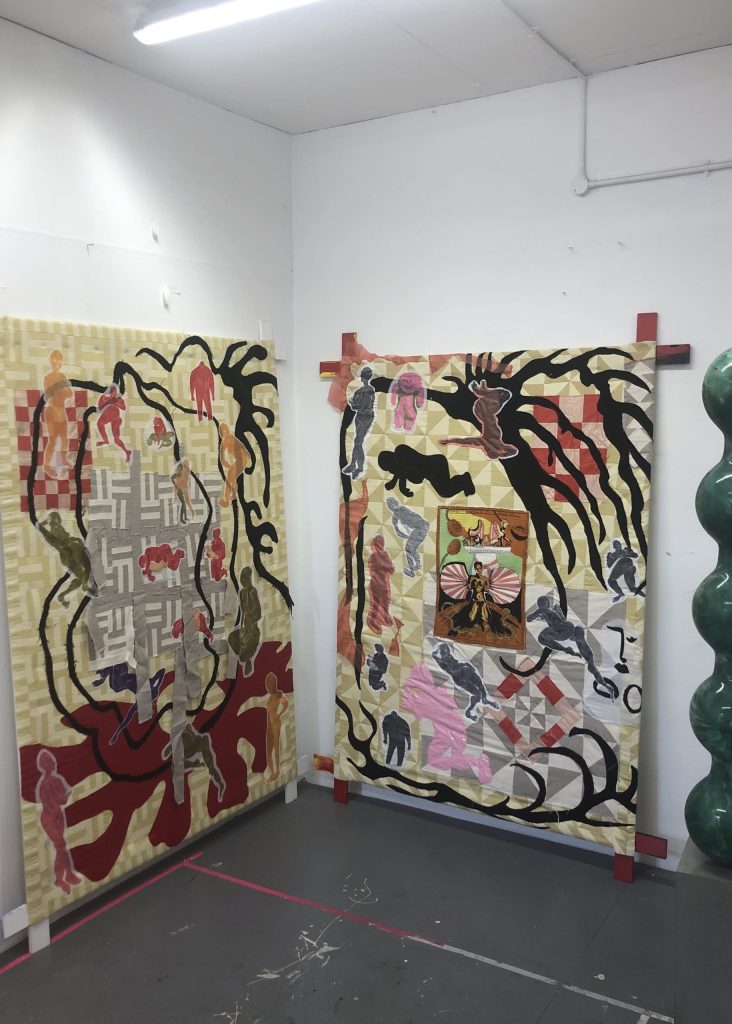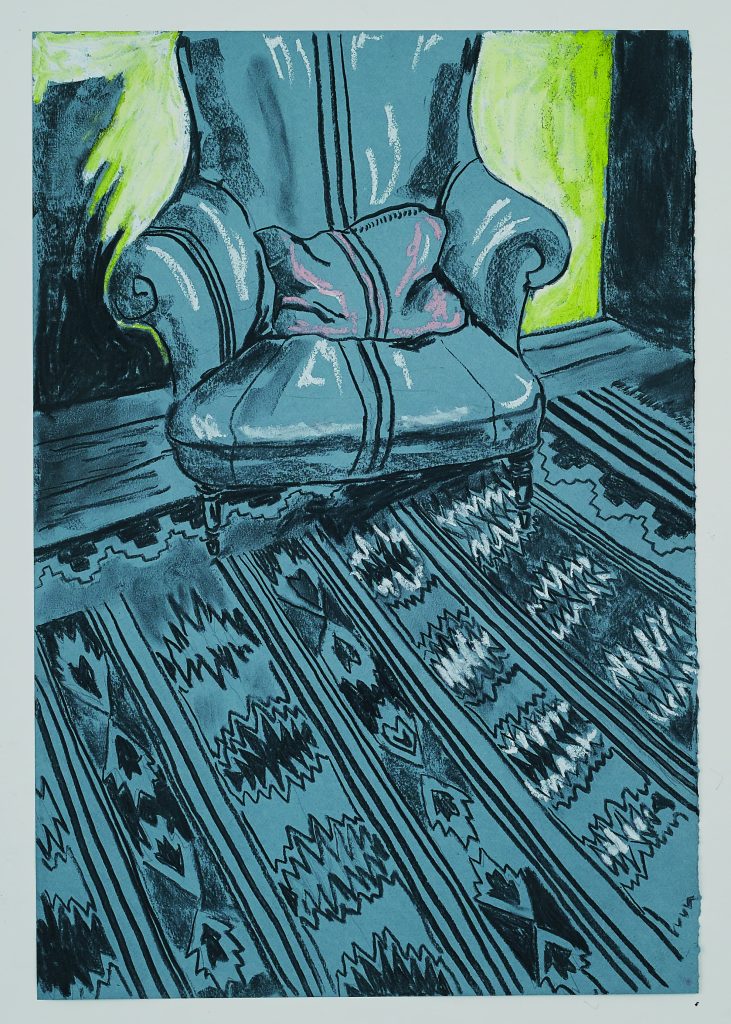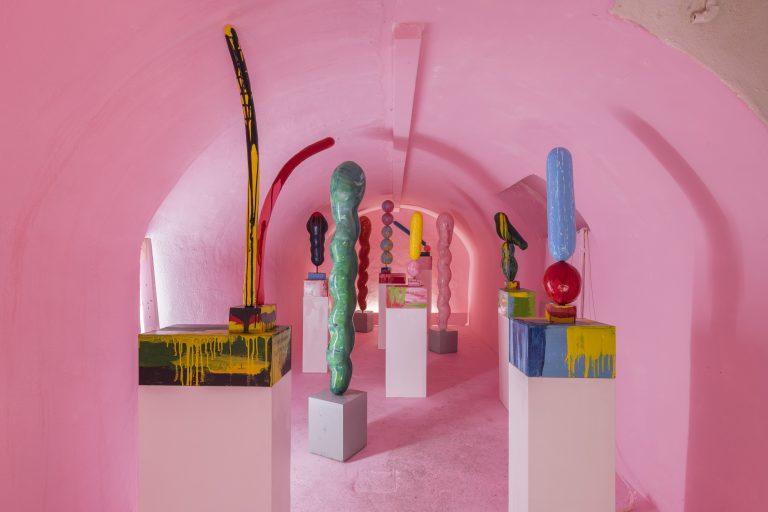Roksanda‘s decade-long journey has been a critical examination of a female-centric aesthetic, yet the brand’s artistic narrative continues and expands beyond its mix of bold colour blocking, contemporary shapes and innovative fabrics. Each year, Roksanda Ilinčić’s gallery welcomes a selection of female creatives to celebrate their artistry, reaffirming their commitment to supporting women and fostering a multidisciplinary approach between art, dance and fashion. As one of the 2023 season guest creatives, Christabel MacGreevy sculpts her way with a Rockpool Series of designs. The collection of 5 glazed stoneware ceramics is unified by their palette and exterior drawings inspired by dream sequences, the psyche, and transcultural symbolism. Utilising her innate ability to evoke emotions through the interplay of the personal and universal, Christabel uses storytelling and iconography to express what it means to experience the human condition. Ceramic glazes become her language, shaping stories that are felt, not just seen.
In the quiet cadence of her words, MacGreevy unveils poetry without rhymes, talking about her art, her process, and her inspiration in her interview for hube.
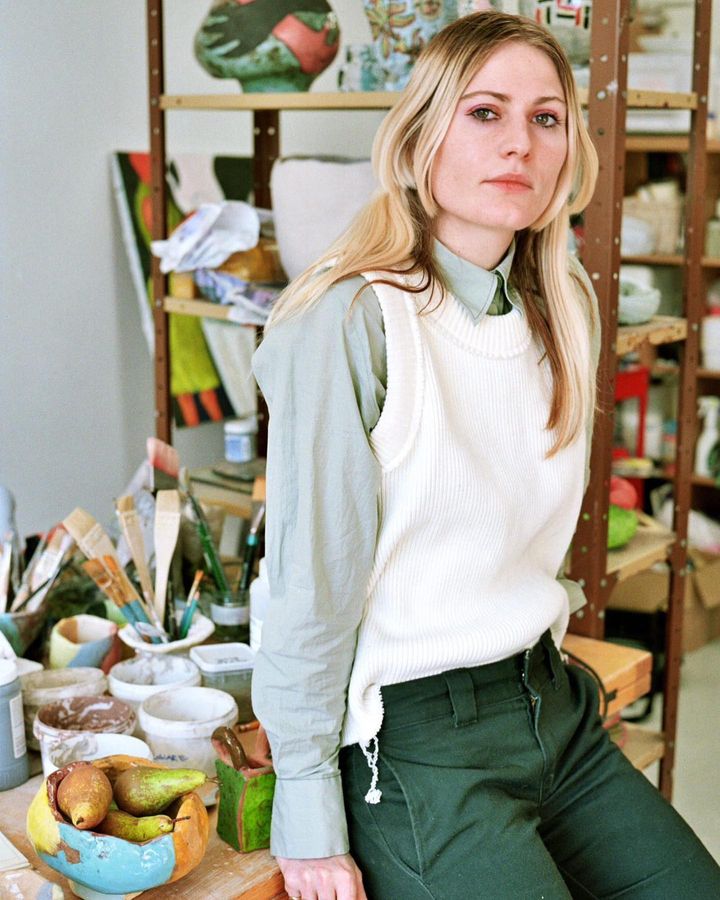

Reading in the Grass (Sexing the Cherry), 2023
Courtesy of the artist
h: Your practice seems aligned with the art of poetry; both employ cadence, emotion, and evocative imagery to build complex narrative objects. Is this a comparison that resonates with you?
Christabel MacGreevy: I relate to the idea of evocative imagery building a narrative. Often through simplification or turning an image into a symbol of itself you create suggestions and allusions to something greater and more complex. It is the same with words, you can say one thing but insinuate another. And part of the power and pull of poetry is in its abstraction, one is not always sure exactly what is being referred to, yet it still builds images in the mind’s eye. I have always loved TS Eliot, from the first time I read The Wasteland and it sent shivers down my spine. I have some other favourite poems too, such as Morning by Frank O’Hara. They evoke feelings of loss and memory and the human capacity for optimism and hope, which feels like a distillation of the meaning of existence.
h: Do you agree that the invisible line between art and design is crossed easily by an artist but with more difficulty by a designer?
CMcG: It really depends on the designer, as so many designers are artists too. However perhaps you could say that design sits a little easier within a business orientation typically. Having said that, some of the last century’s most successful artists have been brilliant business minds, such as Damien Hirst, and some of the world’s most talented designers have barely an entrepreneurial bone in their body. The internet has created an accelerated world of constant newness and desire for content. One positive to this is that artists can tread in the design world temporarily and expand their repertoire and there is perhaps a greater audience for it.
h: Colour is an important element of your work and, to our reading, seems to reflect your relationship with the world. Could you tell us a little about these connections?
CMcG: Colour is everything and has the power to change how we perceive space. Through colour we also make allusions and connections, and draw parallels. Different design movements or chapters in art history utilised different colour palettes, because colour is a language that the viewer interprets. So much of this is subconscious, why we choose to pair a red with a pink, or a black with a yellow, and what the impact of this creates. I love the black of charcoal because it is actually a dark grey, and it has different depths depending on how hard you press it into the paper. It is flexible and malleable. I also love how ceramic glazes change between firings, sometimes making them a little unpredictable. And I love drawing in Sennelier oil pastels, because their vivid colours have the thick waxy texture almost like paint on the page. The combination of colour with texture is what creates the delicious-ness and tactility that makes some works of art so mesmerising.
h: You work across drawing, sculpture, and textile design. How easily do you transition between these different mediums and how do they feed into one another?
CMcG: There is a connection between the way I simplify drawings to cut out in fabric, and the way I work with thick glazes which sometimes require less detail, meaning that the language on some of my ceramics feels close to the textiles world. Intellectually they feed each other well and act as different vessels for depicting similar types of themes, but practically they cause problems. Ceramics are so dusty and there is water everywhere, for washing brushes, cleaning the surfaces etc etc. Textiles need a clean dry dust free space. They don’t exist well in the same studio. So I have to take pauses to switch between. However, drawing sits with either, and steadfastly accompanies both parts of my practice.
h: Through participating in exhibitions and working with galleries and curators, you experience diverse perspectives and interpretations of your work. Our experience of art is always individual, ranging from surprise and delight to disappointment and confusion. Which do you see most often from your audience?
CMcG: Seeing one’s creation through the eyes of someone else, particularly a stranger, is always fascinating, and often reveals parts of one’s own psyche back to you. I have been told that my work is joyous, and feels playful and sometimes a little provoking in a humorous way. I once watched a documentary on Betty Woodman, and she said her whole life people had told her that her work made them feel happy. She had a very sad life in some ways, but there really is no greater compliment or success in creation if you are bringing joy through what you make.
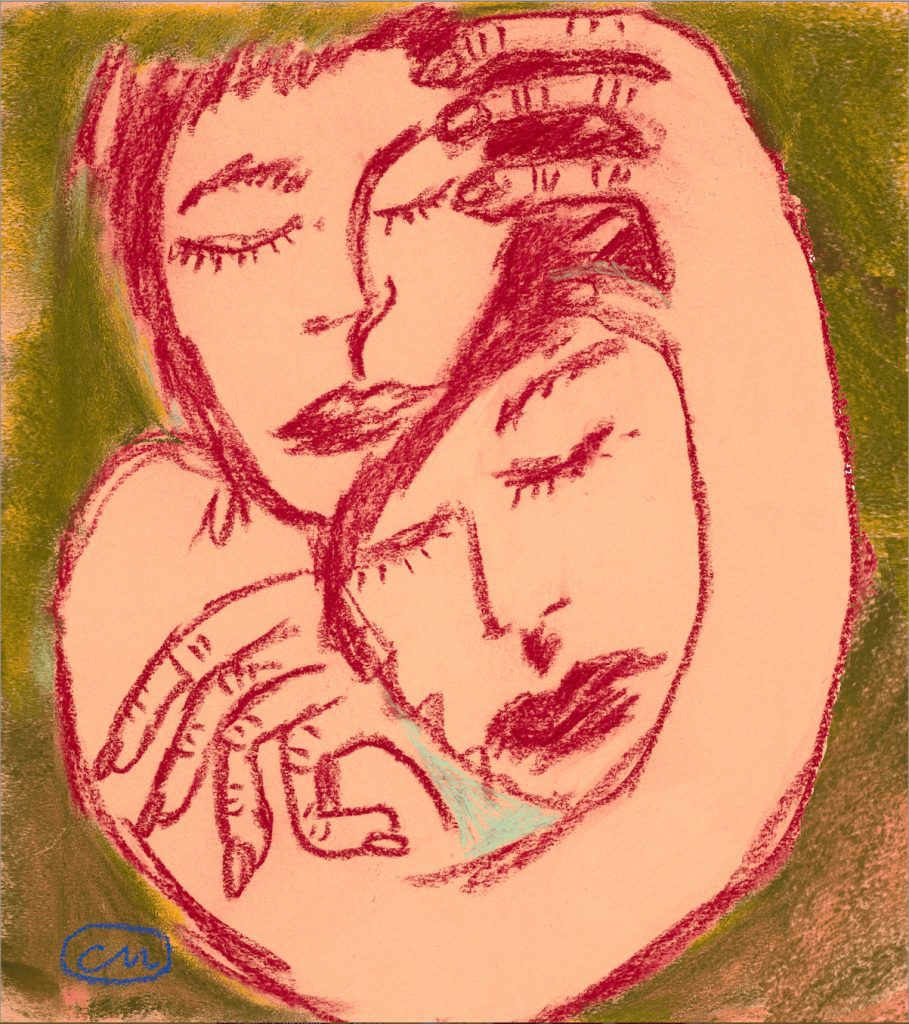
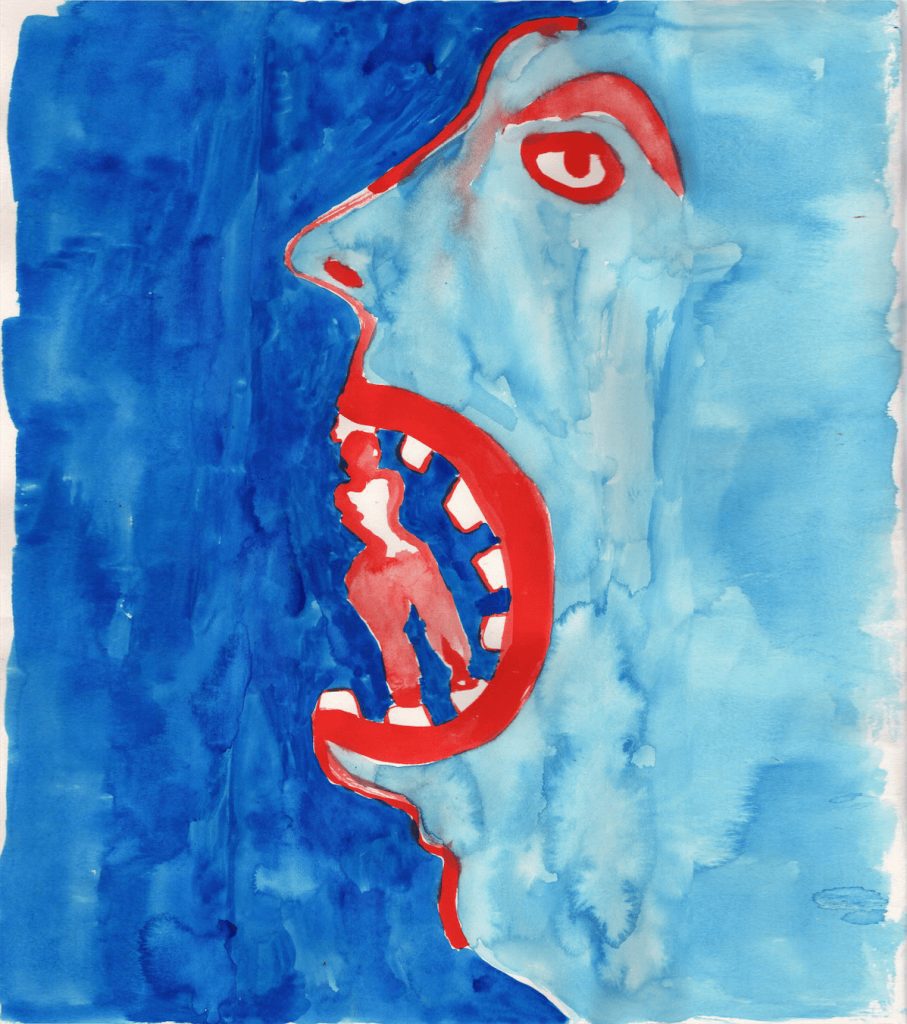
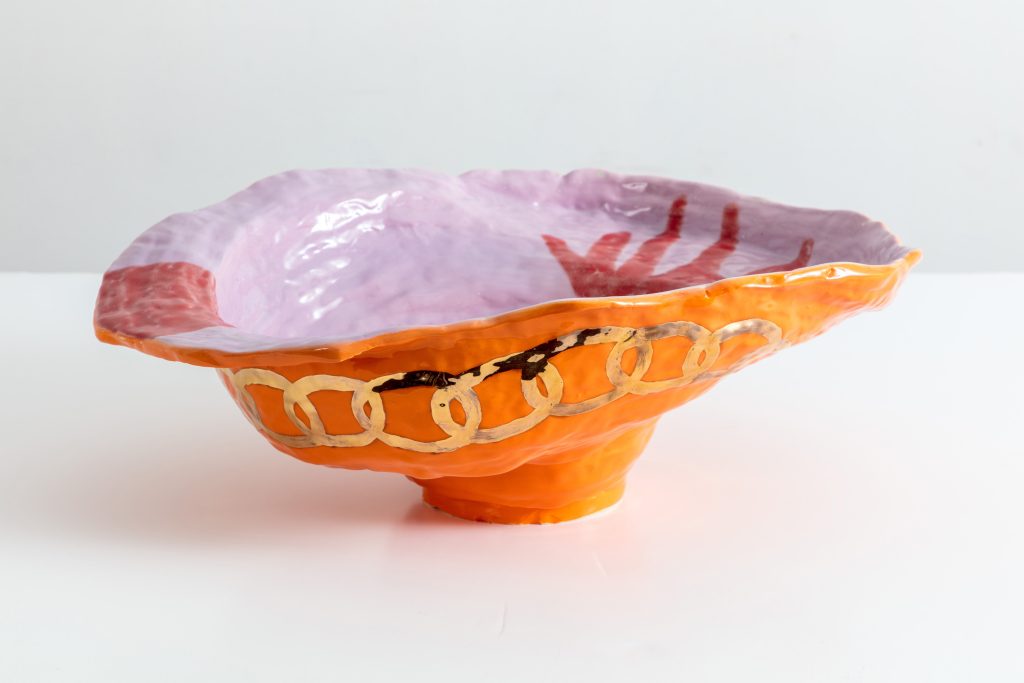
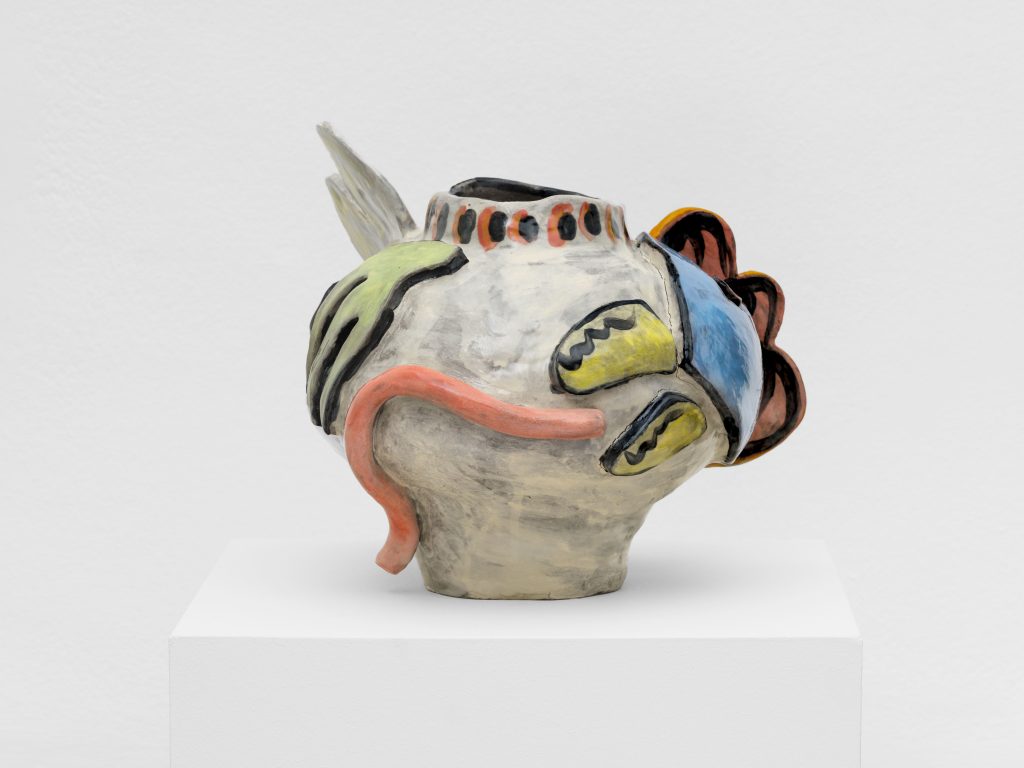
He bit an angle worm in halves & ate the fellow raw, 2022
Courtesy of the artist
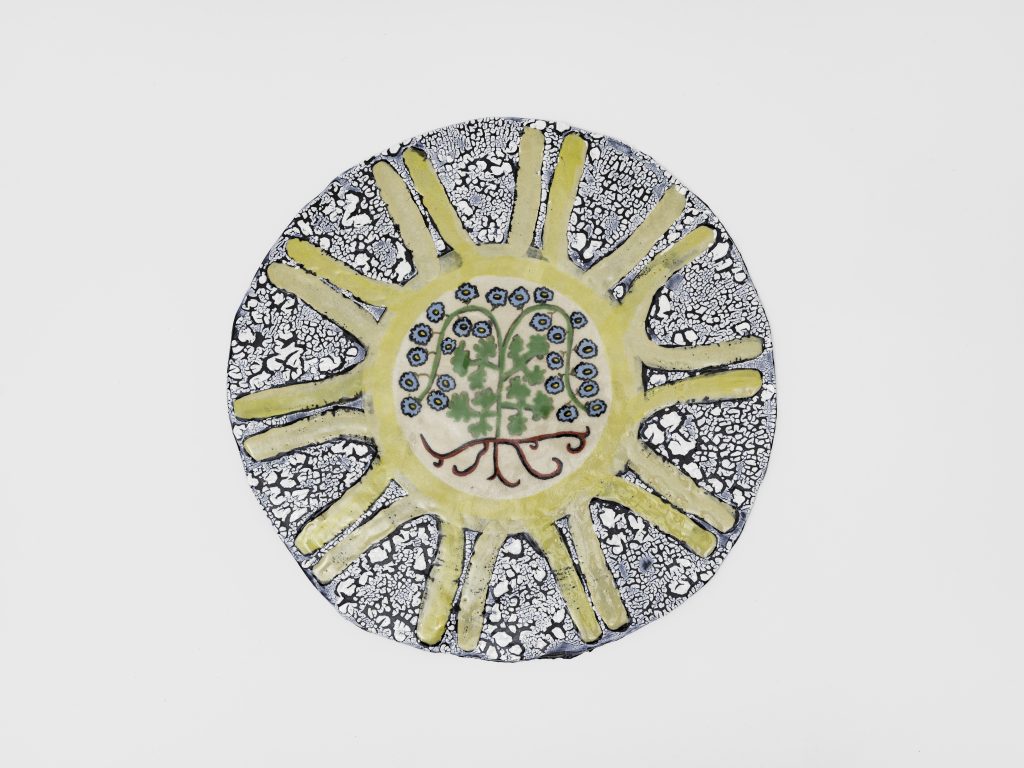
Medallion (Perdita Sin Sol), 2023
Courtesy of the artist
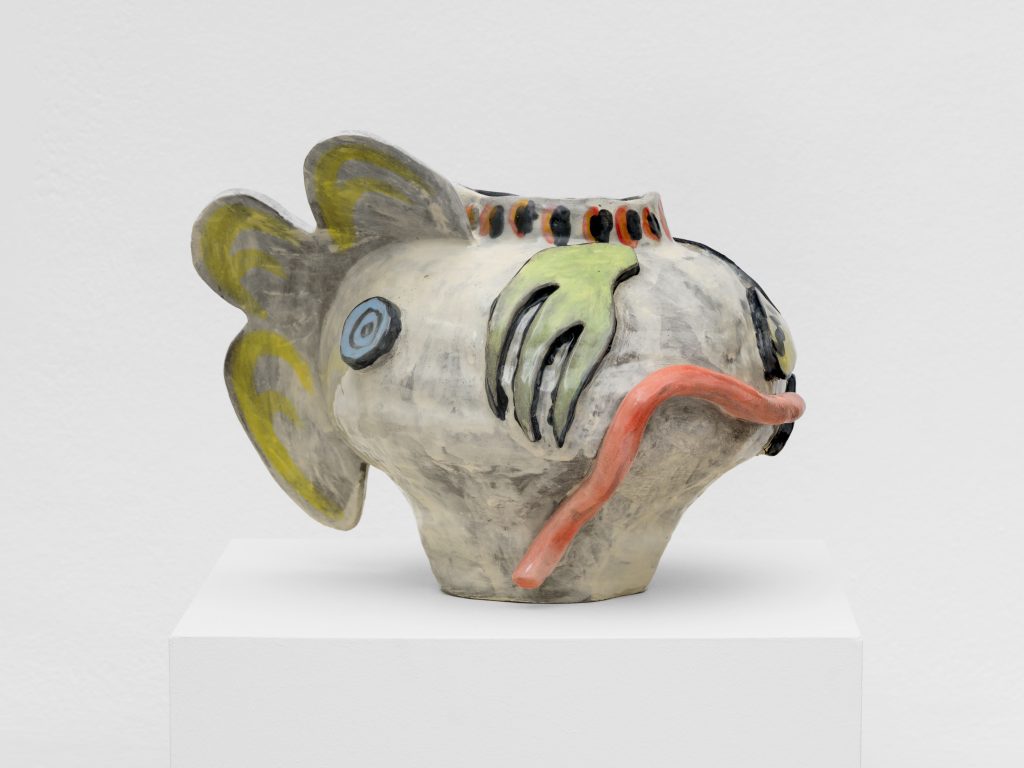
He bit an angle worm in halves & ate the fellow raw, 2022
Courtesy of the artist
